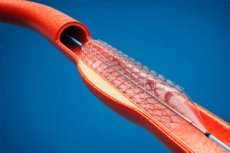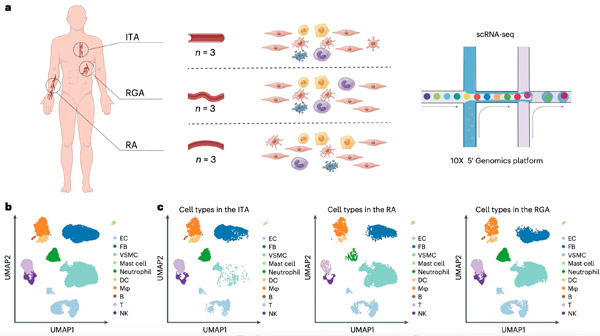Scientists have uncovered the molecular mechanisms of donor arteries for coronary artery bypass grafting
最近審查:14.06.2024

Coronary artery bypass grafting (CABG) is a surgical procedure that improves blood flow to heart tissue and effectively treats myocardial ischemia caused by coronary artery disease. With CABG, a healthy blood vessel is taken from the patient and connected to the diseased artery so that blood can bypass the blocked section of the coronary artery.
The main healthy vessels used for CABG include the internal mammary artery (ITA), radial artery (RA), and right gastroepiploic artery (RGA). Among these donor arteries, ITA provides the best long-term outcome, while RA and RGA are susceptible to intimal hyperplasia, atherosclerosis and vasospasm.
A team led by Wang Xiujie from the Institute of Genetics and Developmental Biology (IGDB) of the Chinese Academy of Sciences, in collaboration with a group led by Song Jianping from Fuwai Hospital of the Chinese Academy of Medical Sciences, used single-core RNA sequencing (scRNA-seq) to study the composition of cell types and genetic expression profiles of ITA, RA and RGA.

Profiling of 38,814 single cells isolated from three types of donor arteries. A. Flowchart of the overall study design; b. UMAP plot of merged donor artery data sets, cells colored according to major cell types; c. UMAP plots showing the composition and similarities of the major cell types in each donor artery. Source: IGDB
The researchers found that the three types of donor arteries differed in their ability to absorb lipid particles, hemodynamics, vasospasm, and fibrosis. Combined with experimental validation in human cells and mice, the following four optimized strategies for CABG have been proposed: inhibition of macrophage migration factor can reduce RA intimal hyperplasia; Potassium channel activators may counteract RGA vasospasm unresponsive to calcium antagonists; inhibition of CREB5 and GDF10 may reduce extracellular matrix deposition and fibrosis in RA and RGA; PCSK9 inhibitors are recommended for lipid-lowering treatments in ITA.
This study is expected to provide guidance for the development of clinical strategies for CABG and the selection of postoperative medications.
The paper, "Strategies for Optimizing Arterial Grafts at the Single-Cell Level," was published in Nature Cardiovascular Research.

